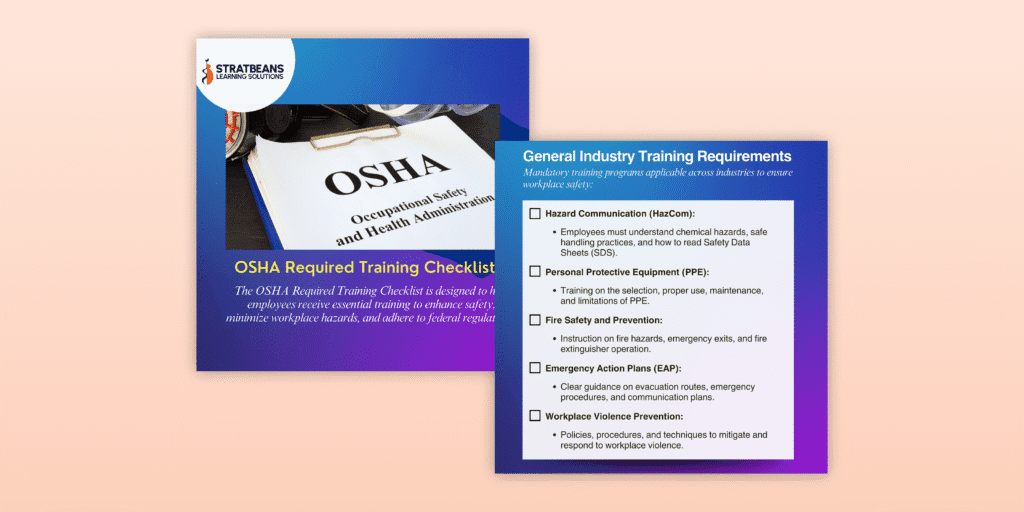Essential OSHA Training Checklist for Workplace Safety: A Complete Guide
Ensuring workplace safety is a critical responsibility for every employer, and OSHA Safety and Health training plays a key role in maintaining a safe working environment. A well-structured OSHA training checklist helps organizations stay compliant with OSHA standards, mitigate workplace hazards, and protect workers from potential risks such as hazardous materials, electrical hazards, and machine operation dangers.

Overview of an OSHA Training Checklist
An OSHA training checklist serves as a structured guide to help organizations meet compliance requirements while fostering a culture of safety. By systematically addressing workplace safety standards, companies can prevent workplace incidents, avoid costly fines, and ensure a compliant workplace.
Key Components of an Effective OSHA Training Checklist
Hazard Recognition and Risk Assessment
Identify workplace hazards such as electrical accidents, chemical spills, and musculoskeletal disorders.
Train employees on detection systems and engineering controls to minimize risks.
Personal Protective Equipment (PPE) and Safety Gear
Educate employees on the proper use of protective equipment, including respiratory equipment, safety harnesses, and protective clothing.
Ensure fit testing for PPE to maintain safety compliance.
Emergency Preparedness and Response
Develop and communicate emergency evacuation plans, including emergency exits and emergency action procedures.
Train employees on handling medical emergencies, infection control plans, and first-aid procedures.
Hazard Communication and Chemical Safety
Ensure compliance with the OSHA Hazard Communication Checklist by training employees on hazardous chemicals, safety data sheets, and tagout procedures.
Establish a hazard communication program to manage chemical handlers and prevent workplace exposure.
Machine Safety and Electrical Protection
Educate employees about machine guarding, electrical safety standards, and Powered Industrial Trucks safety.
Conduct sanitation training and instruct on workplace conditions for industries like manufacturing operations, warehouse workers, and healthcare industries.
Training Documentation and Compliance Records
Maintain training records, including records of workplace injuries and medical records, to track workplace accidents and incidents.
Implement training checklists to ensure consistent training programs for new and existing employees.
Implementing the OSHA Training Checklist
Customizing the Checklist for Your Industry
Different industries require specialized training topics to meet industry standards.
Construction Industry: Follow the OSHA Construction Industry Checklist for site safety.
Manufacturing Sector: Ensure manufacturing safety with proper training for employees handling electrical equipment and potential hazards.
Healthcare Workers: Train staff on infection control plans and safe environment maintenance.
Monitoring and Evaluation
Regular workplace safety evaluations ensure compliance with federal regulations and OSHA General Duty requirements.
Track workplace injury reports and implement corrective measures where needed.
Use digital tools like a mobile-based training platform for streamlined communication training and proper training documentation.
Provide refresher training sessions, such as Annual Refresher or 24-hour training, to keep employees updated.
Conclusion
A well-implemented OSHA training checklist not only helps organizations comply with OSHA Safety and Health Topics but also fosters a healthy workplace. By focusing on training solutions, preventive measures, and workplace safety standards, companies can create a secure working environment while reducing legal issues and work-related injuries.
Prioritizing OSHA training ensures a safer workplace, boosts productivity, and safeguards employees’ health.
Is your training guide in place? Now is the time to act!